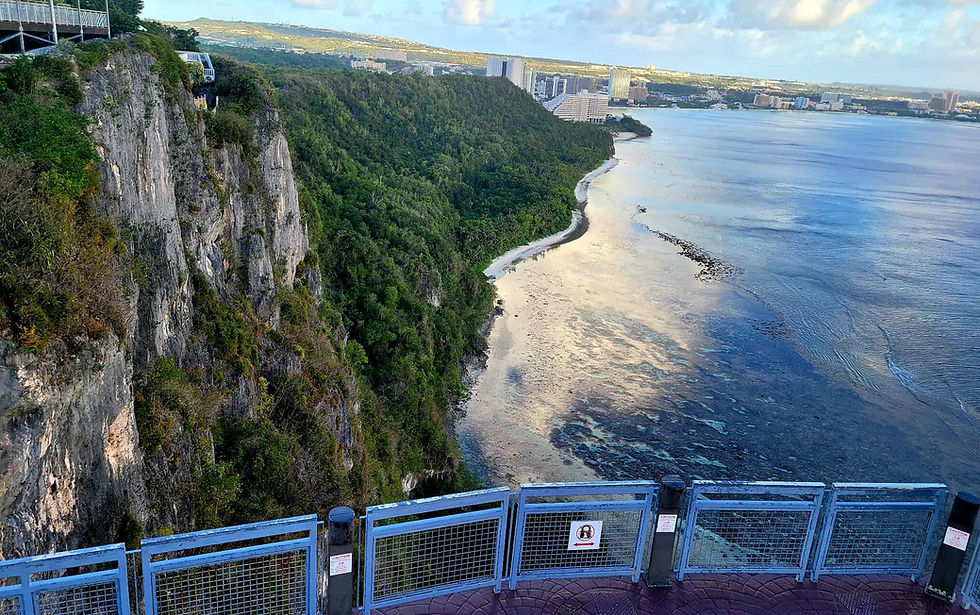The Pacific isn’t remote—it’s simply ignored
- Admin

- Jul 7
- 4 min read


Not for the first time, I was asked this past week where I lived before moving back to the mainland nearly two years ago.
“Guam,” I replied. “And before that, Yap.”
The common response is a blank stare, followed by, “Where’s that?” One questioner thought Guam was in the Caribbean—which is not uncommon among geographically challenged Americans.
Another common response is: “Oh! The South Pacific!”
The association with the South Pacific is undoubtedly due to the famous James Michener book “Tales of the South Pacific,” which was made into a movie and a Broadway play that most high school drama departments have staged at one time or another.
“No,” I respond. “The North Pacific. Above the equator, not below it.” (I was struck mute when one fellow had not even heard of the equator.)
As for Yap and the Federated States of Micronesia—well, need I say they’ve never heard of those either?
The Pacific, according to the majority of Americans, begins and ends with Hawaii before dropping into a dark abyss. Polynesia, Micronesia, Melanesia? They’ve heard of Indonesia (although they’re often vague on where it is), but the other “esias” are just a jumble of unfamiliar words—of which Polynesia is hazily recognized, again thanks to the 50th state.
ADVERTISEMENT
Lack of media representation, geographical distance and a historical focus on other regions are to blame. The Pacific region—both South, but especially North—despite its vastness and importance to world history, is overlooked in American education and popular culture. The Disney movie “Moana” gave the region a fictional face and place, but the vagueness persists, despite its importance in the China-U.S. conflict, deep-sea mining, climate change and the cans of tuna found in most American cupboards.
“Could it be because Pacific Islanders only make up a fraction of a percentage of the U.S. population? Or is it maybe because we’re separated from the mainland by the vast Pacific Ocean?” Gabrielle T. Langkilde, then a student at Harvard and a native of American Samoa, wrote in a March 7, 2018, Harvard Crimson column.
“No,” she said. “The reason why the Pacific Islands remain one big mystery is because we have been nearly erased from American textbooks. Growing up under a curriculum designed by the U.S. Department of Education, it was hard for me to visualize a place for people like me outside of my island home.”
This whitewashed omission of Pacific Islanders is not unlike that of Native Americans, African Americans and Hispanic American cultures—groups whose inherent importance to the makeup of the American diaspora is too often minimized. Most Americans are also unaware of the multitude of different Hispanic cultures, so how can we expect them to comprehend the span of Pacific cultures spread across that immense region?
This, despite the fact that the Pacific has long been part of America’s reach—militarized, colonized, used for testing, yet left out of the national conversation. It’s time that maps, curricula and media stop treating the Pacific like a footnote or a vacation backdrop. These islands aren’t remote—they are central to U.S. history, military strategy, climate policy and identity, perhaps now more than even during World War II.
While living in Guam, I was contacted by journalists—some of whom lived and worked in Australia, New Zealand, Japan and other nearby countries—to provide insight into various aspects of the political landscape. One reporter from a major national newspaper said he had to convince his editor to let him write a few stories about what was happening militarily. He came. He saw. He wrote. He left after a week spent gathering material, meeting with military bigwigs and writing side stories about local characters—never to return.
I’m not from the Pacific, but I lived there long enough to see what many Americans miss entirely: a region rich in culture, complexity and consequence. It’s a place too often erased from the national narrative, even as it remains strategically vital and deeply tied to U.S. history and policy. Maybe it's not surprising that so few know where Guam or Yap is—but it’s certainly telling. The least we can do is start naming these places, acknowledging their people and asking why they’ve been left out of the picture for so long.
And yet, for those of us who’ve lived in these “invisible” islands, they are anything but vague. They are places of language, culture, humor, struggle and deep-rooted ties—places where U.S. flags fly and Chinese ambassadors and businessmen work behind the scenes to gain influence, but places that few Americans can find on a map.
When I went to get a new driver’s license, I handed my Guam license to the receptionist. She said I had to take a driving test since Guam, she insisted, is a foreign country. After much debate (and despite the United States of America being printed at the top of the license), her supervisor entered the fray. It was only after I asked if she’d heard of Puerto Rico and said that Guam is also a U.S. territory that she backed off. “Oh,” she said in surprise.
A few months ago, I gave a photo presentation about Yap for a group of travelers, most of whom had also never heard of it. Their questions at the end were about the effect of climate change and how to get there. When I noted that the tuna they ate was most likely from what I call “the home office of tuna,” they were surprised.
Now, when people ask where I lived before returning to the U.S., I no longer just say “Guam” or “Yap.” I more often add, “A place that deserves to be known. Let me tell you why.”
Joyce McClure is a former senior marketing executive and former Peace Corps volunteer in Yap. Transitioning to freelance writing, she moved to Guam in 2021 and recently relocated back to the mainland. Send feedback to joycemcc62@yahoo.com
Subscribe to
our digital
monthly edition








